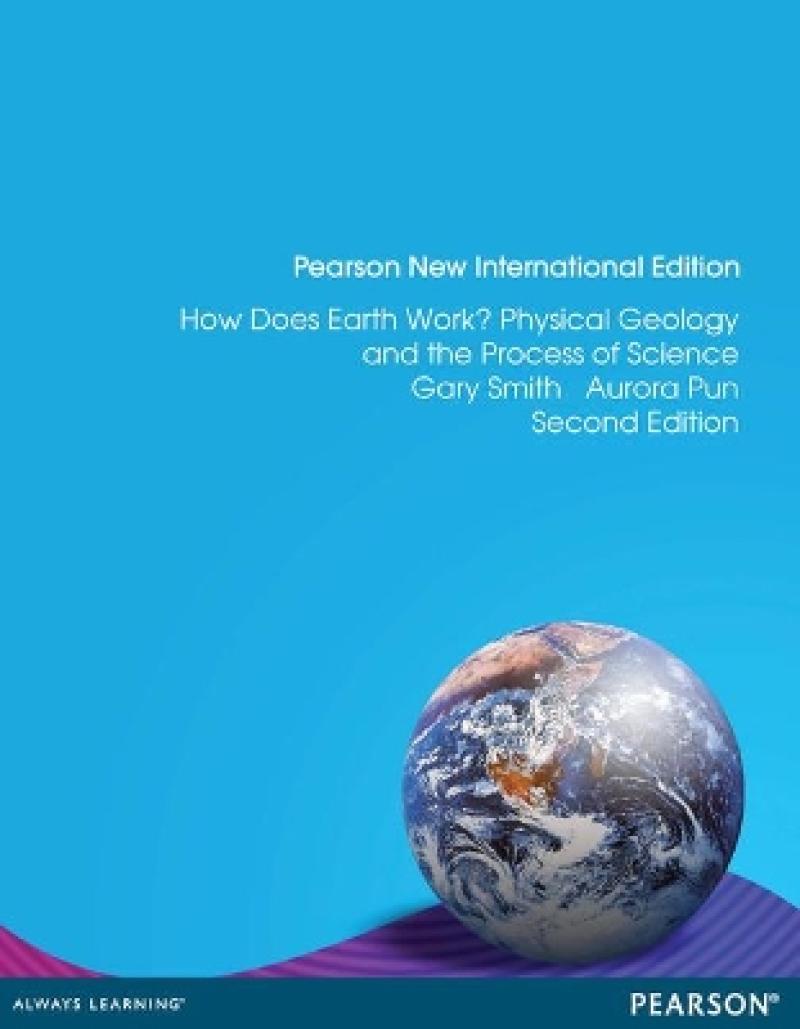For introductory courses in physical geology. Encouraging students to observe, discover, and visualise, How Does Earth Work engages students with an inquiry-based learning method that develops a solid interpretation of introductory geology. Like geology detectives, students learn to think through the scientific process and uncover evidence that explains earth’s mysteries.
Les mer
1. Why Study Earth? 2. Minerals: Building Blocks of the Planet 3. Rocks and Rock-Forming Processes 4. Formation of Magma and Igneous Rocks 5. Formation of Sediment and Sedimentary Rocks 6. Formation of Metamorphic Rocks 7. Earth Materials as Time Keepers 8. Journey to the Center of Earth 9. Making Earth 10. Motion Inside Earth 11. Deformation of Rocks 12. Global Tectonics: Plates and Plumes 13. Tectonics and Surface Relief 14. Soil Formation and Landscape Stability 15. Mass Movements: Landscapes in Motion 16. Streams: Flowing Water Shapes the Landscape 17. Water Flowing Underground 18. Glaciers: Cold-Climate Sculptors of Continents 19. Shorelines: Changing Landscapes Where Land Meets Sea 20. Wind: A Global Geologic Process 21. Global Warming: Real-time Change in the Earth System
Les mer
OBSERVE Integrated learning tools facilitate the inquiry-based learning method, beginning with observations and questions. In the Field: Chapters open with an essay that places a curious investigator in a realistic field or lab setting to observe and ask questions about geological phenomena.Inquiry-based learning method is further illustrated throughout the chapter with headings in the form of questions that are then wrapped up in section-ending Putting It Together boxes.Plate tectonics: To encourage inquiry and application of scientific reasoning, Smith and Pun establish an understanding of the nature of geologic materials and phenomena before fully developing the theory by which they are explained. Observations are first in scientific methodology, so when introducing plate tectonics in Chapter 1, the emphasis is on the general phenomena at plate boundaries. DISCOVER The inquiry-based learning method is further developed as students discover the process of science as it is applied to the key concepts in geology. How Do We Know section in each chapter illustrates the scientific method in practice by detailing a scientific study to show how knowledge of the chapter content was obtained.Real connections: Integrated real-world connections link topics to issues of societal concern or relevant experience to increase appreciation of the value of discovering science.Plate tectonics: The background introduced in Chapter 1 permits integration of plate tectonics into the chapters that follow, culminate in thorough development of the theory in Chapter 12 (after students have a firm grasp of the geological materials and structural features required to understand the theory) instead of simply presenting salient features as undisputed fact. VISUALISE Artful visualisations enhance the inquiry-based learning method. Art for Observation: Annotated illustrations with thoughtful descriptions help students visually observe the hypotheses that culminate throughout the inquiry-based learning method.Plate tectonics: Figure 12.43 offers a dynamic illustration of plate motions through geologic time and is accompanied by an Active Art animated tutorial online.
Les mer
A new Chapter 21, “Global Warming: Real-time Change in the Earth System” focuses on why and how we study climate change.A new Pathway to Learning feature opens each chapter with a visual guide to the questions students will ask in order to achieve the set learning outcomes of the chapter.Student animation tutorials and Extension Modules are now offered on the Companion Website and embedded within an myeBook so students may easily navigate activities.One of several new Extension Modules, “The Future of Oil,” enables students to investigate this natural resource.A handsomely revised art program and overall design, as well as updated and revised content throughout, incorporate user feedback and create a welcome revision.
Les mer
Produktdetaljer
ISBN
9781292042428
Publisert
2013-11-01
Utgave
2. utgave
Utgiver
Vendor
Pearson Education Limited
Vekt
1432 gr
Høyde
276 mm
Bredde
216 mm
Dybde
26 mm
Aldersnivå
P, 06
Språk
Product language
Engelsk
Format
Product format
Heftet
Antall sider
644
